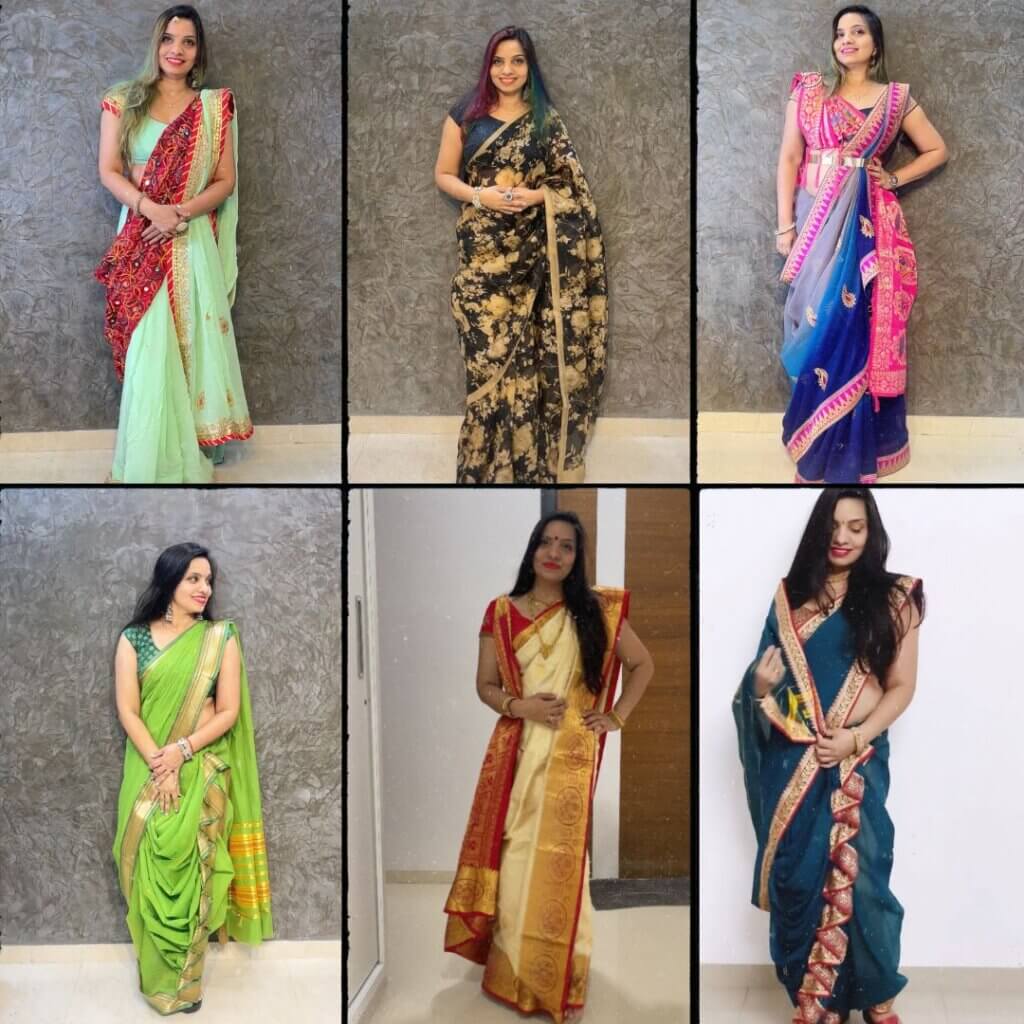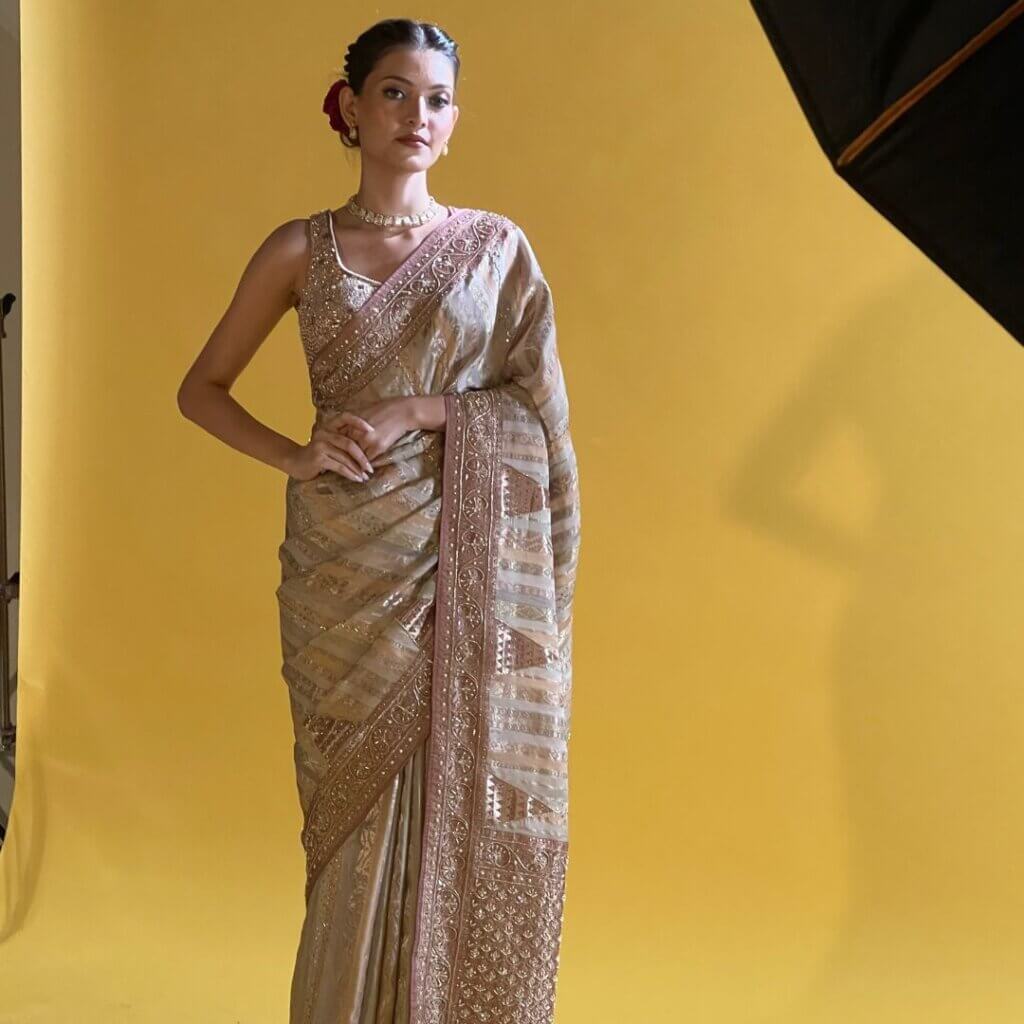
The saree is more than just fabric—it’s an experience, a celebration of culture, and a statement of elegance. Whether worn in the bustling streets of Kolkata, during the quiet rituals of a temple in Tamil Nadu, or at a glitzy wedding in Mumbai, the saree weaves together the rich heritage of India and the personal story of every woman who wears it. This iconic garment, with its flowing fabric and myriad styles, has withstood the test of time, adapting to both tradition and modernity.
In this blog, we dive into the history, magic, and significance of the saree, exploring how this elegant piece of clothing continues to be a powerful symbol of grace, strength, and individuality.
A Glimpse into the Rich History of the Saree
If walls could talk, they would surely speak of the saree’s legacy. Imagine ancient Indus Valley women draped in unstitched fabric, their elegant movements captured in stone carvings. The saree, a garment worn by women for over 5,000 years, has undergone significant transformations but remains the embodiment of India’s heritage.
In the Vedic period, the saree was a symbol of modesty and respect, worn with grace during important rituals. From the palaces of Mughal emperors to the homes of ordinary women, the saree has evolved, incorporating influences from various dynasties, yet preserving its essence as a timeless symbol of femininity.
Saree Styles Across India: A Tapestry of Diversity
One of the most fascinating aspects of the saree is how each region of India has developed its own unique draping techniques, fabric choices, and embroidery styles. It’s not just a piece of clothing—it’s an art form that reflects the soul of the place it comes from.
The Nivi Drape: A Classic from the Heart of India
The Nivi drape is perhaps the most iconic style of wearing a saree, and it’s universally adored across India. Popular in states like Maharashtra, Gujarat, and Rajasthan, the Nivi style involves pleating the saree at the front, wrapping it around the waist, and draping the pallu over the left shoulder. The beauty of this style lies in its simplicity and versatility, perfect for everything from daily wear to grand celebrations. But did you know that this drape was popularized by none other than Maharani of Baroda, who redefined royal fashion during the colonial era?
Gujarati Drape: Where Elegance Meets Function
The Gujarati style is a delightful blend of tradition and practical beauty. Women in Gujarat traditionally wear the saree with pleats in the front, neatly tucked into the waist, and the pallu draped over the left shoulder. The real charm, however, lies in the “fancy” pleats—the unique feature of Gujarati draping. These pleats are often bunched together, forming a visually striking pattern, making the saree perfect for those who want to embrace elegance with a practical edge.
Maharashtrian Nauvari: The Fierce Yet Graceful Draping
When you think of the Nauvari saree, think strength, tradition, and fierceness. Worn traditionally as a 9-yard saree, the Nauvari is draped like a dhoti, allowing freedom of movement—a feature highly appreciated during the energetic dance forms like Lavani. This style, often paired with traditional jewelry and a nose ring (nath), is more than just an outfit; it’s a bold statement of empowerment.
Bengali Drape: Grace in Every Fold
The Bengali saree is a symbol of elegance. Draped with such meticulous care, the saree’s pallu is brought from the back, passed under the arm, and draped over the left shoulder. It’s a style that allows women to carry the saree with utmost grace, almost like it’s an extension of their very soul. You’ll often see these sarees with the iconic “shaakha pola”—the red and white bangles worn by married Bengali women—adding to their charm.
Kanjivaram: Silk and Royalty Intertwined
The Kanjivaram saree is as regal as they come, embodying the grandeur of Tamil Nadu’s ancient weaving traditions. Known for their rich silk, bold colors, and intricate zari (gold thread) work, these sarees are worn by brides and women during festivals. But did you know that the art of weaving these sarees was once so revered that the weavers were given royal patronage, with kings and queens commissioning pieces for special occasions? The Kanjivaram is not just a saree; it’s a piece of history.
Final Thoughts: The Saree as a Living Tradition
The saree is more than just fabric; it’s a story told through threads, a journey passed from generation to generation, and a timeless symbol of India’s rich culture. As it continues to evolve, the saree remains a powerful reminder of how fashion can be an expression of culture, identity, and personal history.
So, whether you’re draping a simple cotton saree for a casual outing or donning a Kanjivaram for a wedding, remember this: every saree you wear is not just a piece of clothing—it’s a celebration of the legacy, beauty, and grace of Indian tradition.

